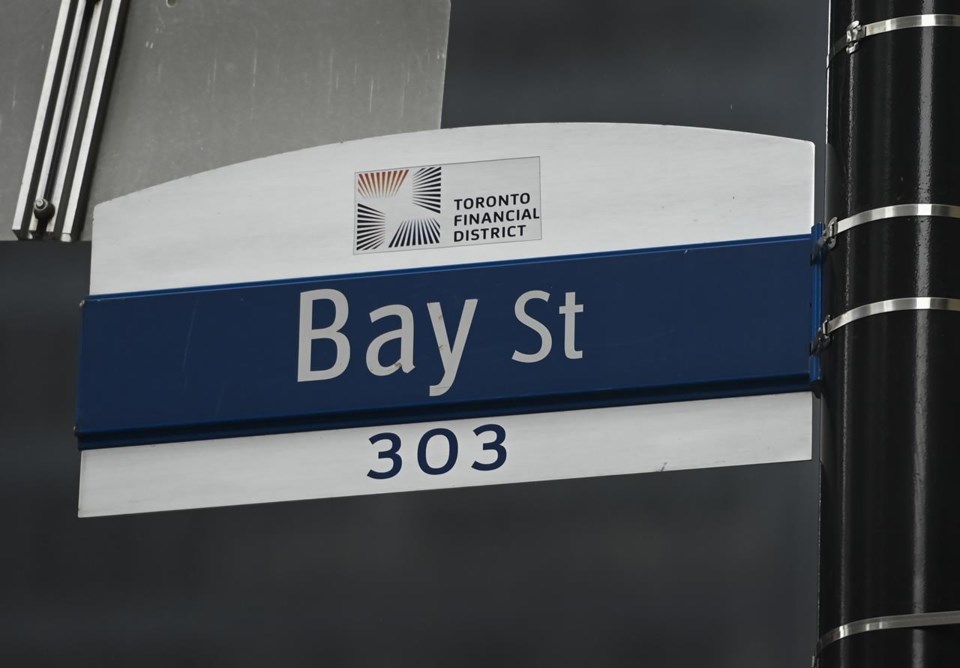TORONTO — Canada and U.S. markets ended the trading day in the red, reversing course mid-afternoon after spending the majority of the day higher.
While Canada's main stock index finished the day just mildly lower on Thursday, U.S. stock markets backslid much more steeply, with the Nasdaq and the Dow losing 1.4 per cent and the S&P 500 down 1.2 per cent.
The slump came after Minneapolis Fed President Neel Kashkari said he’s questioning the need to loosen monetary policy this year if so many areas of the U.S. economy look to be solid despite high interest rates.
Though he had previously pencilled in two cuts for 2024, “if we continue to see inflation moving sideways, then that would make me question about whether we need to do those rate cuts at all,” he said.
The comments prompted an apparent "knee-jerk reaction" by investors, who want to see interest rate cuts, said Allan Small, senior investment adviser at iA Private Wealth.
"I'm sure everybody wants to see lower interest rates, but you don't necessarily need lower interest rates to see the economy continuing to move forward," he said.
"At least that's what we're seeing in the economic data."
The S&P/TSX composite index closed down 60.67 points at 22,051.79.
In New York, the Dow Jones industrial average was down 530.16 points at 38,596.98.The S&P 500 index was down 64.28 points at 5,147.21, while the Nasdaq composite was down 228.38 points at 16,049.08.
Kashkari's comments came a day after a Wednesday speech by Fed chair Jerome Powell that had markets feeling hopeful as he reiterated plans to cut rates in 2024 and said that recent economic data didn't “materially change the overall picture.”
Markets are heavily focused on when interest rate cuts might begin and how many could be on the horizon, said Small. But right now the economy is strong, at least in the U.S., he said, and the Fed seems ready to cut once it sees signs of continued softening.
“If the economy in the U.S. slows, the Fed is there to cut rates right away or as fast as they can,” he said. “And if the economy continues to move forward, and at a good pace ... then they don't need to cut, and therefore the market should be in a good mood just because everything is good.”
Friday will cap the week off with fresh labour market data in both Canada and the U.S.
Investors will want to see data that supports upcoming rate cuts, said Small, but not too urgently.
“Investors want something Goldilocks,” he said.
Oil continued its upward climb Thursday, with the May crude oil contract up US$1.16 at US$86.59 per barrel. The escalating tensions in the Middle East continue to drive prices higher, said Small, as do production cuts and recently stronger economic data out of China.
If the higher oil prices persist, that could have an impact on inflation data, he added.
“The longer we see elevated oil prices, the more it has the ability to affect the inflation data.”
The Canadian dollar traded for 74.05 cents UScompared with 73.87 cents US on Wednesday.
The May natural gas contract was down seven cents at US$1.77 per mmBTU.
The June gold contract was down US$6.50 at US$2,308.50 an ounce and the May copper contract was up six cents at US$4.25 a pound.
-- With files from The Associated Press
This report by The Canadian Press was first published April 4, 2024.
Companies in this story: (TSX:GSPTSE, TSX:CADUSD)
Rosa Saba, The Canadian Press




